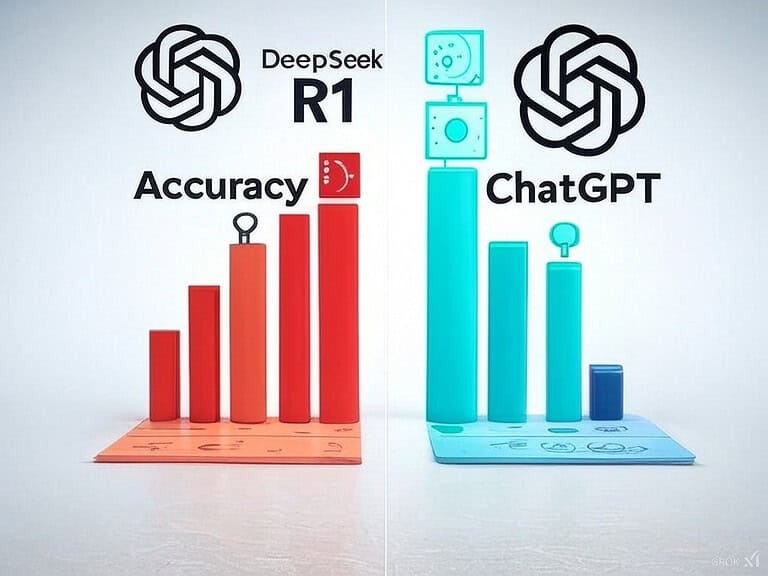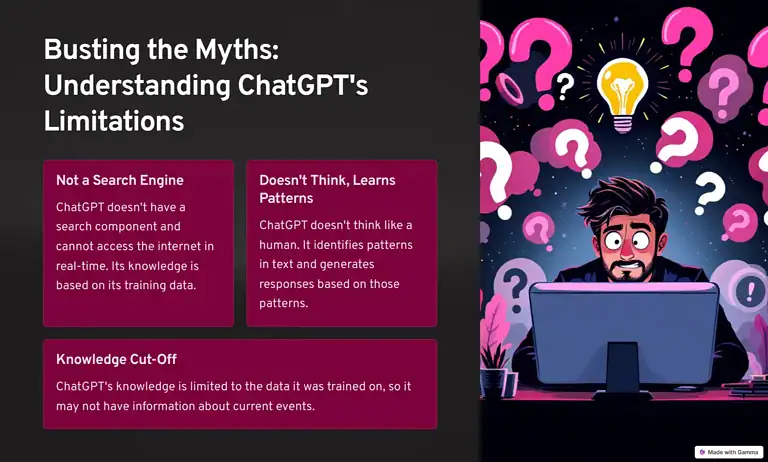ChatGPT Same Answers? 7 Proven Fixes for Diverse Responses (2025)
Artificial intelligence has made remarkable progress in recent years, giving rise to advanced language models like ChatGPT. As these AI systems become more prevalent in our lives, questions have arisen about the consistency and accuracy of ChatGPT’s responses. In this article, we will delve into the factors that influence ChatGPT’s answers, including input data, training algorithms, and user feedback.
Key Takeaways:
- ChatGPT, an AI-powered language model, generates responses to user queries.
- Consistency and accuracy of ChatGPT‘s answers are influenced by various factors.
- Input data, training algorithms, and user feedback play significant roles in shaping ChatGPT’s responses.
- Contextual information and the language and tone used in prompts impact the language and tone of ChatGPT’s responses.
- OpenAI continues to improve ChatGPT’s performance and plans to release GPT-4, enhancing accuracy and usefulness.
Understanding ChatGPT: A Powerful NLP Model

ChatGPT is an advanced natural language processing (NLP) model developed by OpenAI. It utilizes deep learning techniques and is built upon the GPT-3.5 architecture, which is known for its exceptional performance in language modeling. As one of the largest and most advanced language models in the world, ChatGPT has the ability to analyze vast amounts of text data, enabling it to generate human-like responses to user queries.
With its transformer-based architecture, ChatGPT learns the intricacies of language structure and patterns by processing extensive text datasets, including books, articles, and websites. This understanding allows the model to generate coherent and contextually relevant responses when presented with user prompts.
As an AI-driven language model, ChatGPT showcases the power of generative AI in natural language processing. It can generate responses that simulate human-like conversation, making it a valuable tool in various domains such as customer service, content generation, and virtual assistance.
The Capabilities of ChatGPT
ChatGPT, powered by its GPT-3.5 architecture, demonstrates several remarkable capabilities. It can understand complex sentence structures, grasp context, and produce cohesive and relevant responses. The model is capable of handling a wide range of inquiries and queries, making it a versatile tool for users seeking information or assistance.
Furthermore, ChatGPT has been trained on diverse datasets, leading to its proficiency in understanding and generating text in multiple languages. This enables the model to cater to a global audience and provide valuable insights and assistance across linguistic barriers.
| Key Features of ChatGPT | Benefits |
|---|---|
| Powerful NLP Model | Generates contextually relevant responses |
| GPT-3.5 Architecture | Enables deep learning and language understanding |
| Language Support | Capable of understanding and generating text in various languages |
| Versatile Applications | Useful in customer service, content generation, and virtual assistance |
ChatGPT embodies the cutting-edge advancements in AI and NLP, offering users a powerful and intelligent conversational tool that can enhance their productivity and provide valuable insights.
How ChatGPT Works: From Data Processing to Response Generation
ChatGPT operates by employing a series of steps from data processing to response generation, allowing it to provide intelligent and contextually relevant answers. The underlying architecture of ChatGPT is based on a transformer model, which consists of multiple layers of self-attention and feed-forward neural networks. This architecture enables the model to capture intricate relationships between words in a sentence, resulting in a more comprehensive understanding of the input text.
In terms of data processing, ChatGPT relies on a diverse range of text data, including books, articles, and websites. This extensive dataset serves as the foundation for the model’s knowledge and enables it to grasp various concepts and linguistic patterns. During the training phase, ChatGPT is first pretrained on a generic dataset and then fine-tuned with the help of human reviewers who follow specific guidelines provided by OpenAI.
When a user interacts with ChatGPT by providing a prompt or question, the input text undergoes a tokenization process. This process breaks down the text into smaller units called tokens, which are then fed into the transformer layers. The model analyzes these tokens, taking into account the context and relationships between them, to generate a response that aligns with its trained knowledge. The input processing and contextual understanding capabilities of ChatGPT contribute to its ability to generate meaningful and coherent responses.
Example:
Question: How does ChatGPT generate responses?
Response: ChatGPT generates responses by processing large amounts of text data and utilizing a transformer architecture. This architecture allows the model to capture dependencies between words and understand the context of the input text. By fine-tuning on specific datasets and leveraging tokenization techniques, ChatGPT generates responses based on its trained knowledge.
Through the seamless integration of data processing, fine-tuning, and advanced transformer architecture, ChatGPT showcases its capabilities in generating informative and contextually relevant responses. This intricate process allows the model to leverage its extensive training and produce answers that are tailored to user queries.
The Variability of ChatGPT’s Answers
When interacting with ChatGPT, you may have noticed that it does not always provide the exact same answer to everyone who asks the same question. This variability in its responses is influenced by several factors that contribute to the complexity of language processing and generation.
One of the key factors that influence ChatGPT’s answers is the contextual information provided in the question. ChatGPT relies on the details and nuances of the question to generate an appropriate response. By considering the context, ChatGPT aims to provide tailored and relevant answers that align with the specific query.
The language and tone used in the prompt also play a significant role in shaping ChatGPT’s responses. Just as humans adjust their language and tone based on the conversation, ChatGPT tends to mirror the language and tone it encounters. This adaptability allows it to generate responses that are more aligned with the desired communication style.
Moreover, the training data used to develop ChatGPT can introduce biases or inaccuracies that may be reflected in the answers provided by the model. As ChatGPT learns from large amounts of text data, the biases, assumptions, and limitations present in the training data can influence the output. OpenAI continuously works on improving the model by refining the training process and gathering feedback from users to address these concerns.
Table: Factors Influencing ChatGPT’s Answers
| Factors | Description |
|---|---|
| Contextual Information | The details and nuances provided in the question shape the response generated by ChatGPT. |
| Language and Tone | ChatGPT adapts its language and tone based on the input to align with the desired communication style. |
| Training Data | The biases, inaccuracies, and limitations present in the training data can influence the answers provided by ChatGPT. |
Factors Influencing ChatGPT’s Responses
When interacting with ChatGPT, several factors come into play that influence the answers it provides. These factors include contextual information, language and tone, and the training data used to develop the model.
Contextual information plays a crucial role in determining the response generated by ChatGPT. The clarity and specificity of the question you pose to the model can impact the accuracy and relevance of the answer you receive. Providing as much relevant detail as possible can help ChatGPT understand the context and generate a more satisfactory response.
The language and tone used in your prompt can also influence the language and tone of ChatGPT’s answer. If you use formal or informal language, the model is likely to adopt a similar style in its response. Being mindful of the language and tone you employ can help ensure that the generated answer aligns with your expectations.
Table: Factors Influencing ChatGPT’s Responses
| Factors | Description |
|---|---|
| Contextual Information | The clarity and specificity of the question can impact the accuracy and relevance of the response. |
| Language and Tone | The language and tone used in the prompt can influence the language and tone of the generated answer. |
| Training Data | The biases and inaccuracies present in the training data can shape the responses provided by ChatGPT. |
Lastly, the training data used to develop ChatGPT can have a significant impact on its responses. The biases and inaccuracies present in the training data are likely to be reflected in the generated answers. OpenAI is constantly working to improve the quality and diversity of the training data to enhance ChatGPT’s performance and minimize potential biases.
By understanding these factors and taking them into account when interacting with ChatGPT, you can optimize your experience and receive more accurate and relevant answers.
Improving ChatGPT’s Performance

OpenAI is continuously working towards improving the performance of ChatGPT to enhance its accuracy, contextual understanding, and response time. One of the key aspects of this improvement is the utilization of diverse training data. By incorporating a wide range of text data from various sources, ChatGPT can develop a more comprehensive understanding of language and generate more accurate responses.
In addition to diverse training data, OpenAI has also introduced GPT-4, an updated version of ChatGPT. With its enhanced capabilities, GPT-4 can handle larger amounts of text and process contextual information more effectively. This improvement in performance contributes to faster response times and better accuracy, allowing users to receive more reliable and insightful answers from ChatGPT.
| Improvements in ChatGPT | Description |
|---|---|
| Utilization of diverse training data | By incorporating various sources of text data, ChatGPT improves its understanding of language and generates more accurate responses. |
| Introduction of GPT-4 | GPT-4, an updated version of ChatGPT, can handle larger amounts of text and process contextual information more effectively, resulting in faster response times and improved accuracy. |
With these advancements, ChatGPT provides users with a more robust and reliable AI chatbot experience. By upgrading to ChatGPT Plus, users can gain access to GPT-4 and its enhanced capabilities, ensuring access to the latest features and improvements in performance.
The Benefits of ChatGPT
ChatGPT, as an AI chatbot, offers numerous benefits that can enhance various aspects of your work and personal life. Understanding these advantages can help you leverage ChatGPT to its fullest potential:
- Efficiency: ChatGPT can handle routine tasks, freeing up your time to focus on more complex and strategic activities.
- Cost Savings: By using ChatGPT, you can save costs compared to hiring additional employees for tasks that can be automated.
- Improved Content Quality: ChatGPT can assist in generating ideas and editing content, leading to higher-quality output in areas such as writing and content creation.
- Education and Training: ChatGPT can serve as a virtual tutor, helping you learn new concepts or reinforce existing knowledge in a personalized and interactive manner.
- Better Response Time: With its fast processing capabilities, ChatGPT provides quicker response times, allowing for more efficient interactions.
- Increased Availability: ChatGPT is available 24/7, providing on-demand assistance whenever you need it.
- Multilingual Support: ChatGPT offers support for multiple languages, enabling communication and assistance in various linguistic contexts.
- Personalization: ChatGPT can be customized based on your preferences, providing a tailored experience that suits your specific needs.
- Scalability: As an AI chatbot, ChatGPT can handle multiple interactions simultaneously, allowing for scalability and efficient communication across a large user base.
- Natural Language Understanding: ChatGPT excels at understanding human language, making it easy to communicate with and receive accurate responses.
- Digital Accessibility: With its text-based interface, ChatGPT is accessible to users with visual impairments or those who prefer written communication.
In summary, ChatGPT’s benefits encompass enhanced efficiency, cost savings, improved content quality, education and training capabilities, better response times, increased availability, multilingual support, personalization options, scalability, natural language understanding, and digital accessibility. By taking advantage of these benefits, you can leverage ChatGPT to streamline your workflow, improve productivity, and achieve your goals more effectively.
| Benefit | Description |
|---|---|
| Efficiency | ChatGPT handles routine tasks, freeing up time for more strategic activities. |
| Cost Savings | Using ChatGPT can save costs compared to hiring additional employees. |
| Improved Content Quality | ChatGPT assists in generating ideas and editing content for higher-quality output. |
| Education and Training | ChatGPT functions as a virtual tutor, helping you learn new concepts or reinforce knowledge. |
| Better Response Time | ChatGPT provides quick response times, enabling efficient interactions. |
| Increased Availability | ChatGPT is available 24/7, providing on-demand assistance. |
| Multilingual Support | ChatGPT offers support for multiple languages, facilitating communication in diverse contexts. |
| Personalization | ChatGPT can be customized based on user preferences for a tailored experience. |
| Scalability | ChatGPT handles multiple interactions simultaneously, allowing for scalability. |
| Natural Language Understanding | ChatGPT excels at understanding human language, providing accurate responses. |
| Digital Accessibility | With its text-based interface, ChatGPT is accessible to users with visual impairments. |
Limitations and Ethical Concerns of ChatGPT

While ChatGPT offers impressive capabilities, it is important to recognize its limitations and be aware of the ethical concerns surrounding its use. Understanding these factors can help users make informed decisions and use the tool responsibly.
Limitations
ChatGPT has certain limitations that can affect the accuracy and quality of its responses. For instance, it may struggle to fully understand complex human language and provide insightful answers. This is because the model’s training data only goes up to 2021, and it may not have access to the most up-to-date information. As a result, some responses may sound unnatural or lack depth.
Ethical Concerns
There are several ethical concerns associated with the use of ChatGPT. One major concern is the potential for bias in its responses. ChatGPT learns from large datasets, and if those datasets contain biases or inaccuracies, they can be reflected in the model’s answers. Additionally, there are privacy and security considerations when using AI tools like ChatGPT, as personal information may be processed or stored. There is also the risk of malicious users exploiting the system for cheating, plagiarism, or spreading misinformation.
| Ethical Concerns of ChatGPT | Description |
|---|---|
| Accuracy | Limitations in understanding complex language and lack of access to the most up-to-date information can impact response accuracy. |
| Bias | ChatGPT can reflect biases present in its training data, potentially leading to biased or skewed responses. |
| Privacy and Security | Using AI tools like ChatGPT involves sharing information, which raises concerns about privacy and the security of personal data. |
| Cheating, Plagiarism, and Misinformation | Malicious users can exploit ChatGPT to engage in dishonest practices, such as cheating on assignments, plagiarizing content, or spreading false information. |
It is crucial to consider these limitations and ethical concerns when utilizing ChatGPT, ensuring responsible and mindful usage. OpenAI is actively addressing these concerns and working towards improving the system’s performance, but it is important for users to remain vigilant and exercise caution when interacting with AI-powered tools.
Tips for Getting the Best Answers from ChatGPT
When using ChatGPT, there are several tips and strategies you can employ to ensure that you get the best answers to your questions. By following these suggestions, you can enhance your experience and obtain more accurate and relevant responses.
1. Ask Clear and Specific Questions
One of the most effective ways to receive accurate answers from ChatGPT is to ask clear and specific questions. Avoid vague or ambiguous prompts that may confuse the model and result in less precise responses. Provide as much relevant information as possible to help ChatGPT understand the context of your question.
2. Ask for Clarification if Needed
If you feel that ChatGPT’s initial response does not fully address your question or if you require further information, don’t hesitate to ask for clarification. You can request additional details or ask the model to elaborate on a specific aspect of its response. This can help ensure that you receive the most accurate and comprehensive answer.
3. Verify Information from Reliable Sources
While ChatGPT is a powerful AI model, it is always a good practice to verify information from reliable sources. Cross-check the answers provided by ChatGPT with trusted references or experts in the field to ensure accuracy. This can help you make informed decisions and avoid potential misinformation.
4. Break Down Complex Questions
If you have a complex question, consider breaking it down into smaller, more specific inquiries. This can help ChatGPT generate focused responses that address each aspect of your question individually. By simplifying the question, you increase the likelihood of receiving accurate and relevant information.
“Asking clear and specific questions, seeking clarification when needed, verifying information from reliable sources, and breaking down complex questions can help you get the best answers from ChatGPT.”
Remember that ChatGPT is a tool that continually learns and evolves based on user feedback. If you encounter any issues or inaccuracies, it’s important to report them to OpenAI. Your feedback plays a vital role in improving the model and ensuring that it provides the best possible answers to users.
By employing these tips and actively engaging with ChatGPT, you can enhance your experience and get the most out of this powerful AI chatbot. Clear and specific questions, along with proper verification and breakdown of complex inquiries, will help ChatGPT provide accurate and relevant responses to assist you with your information needs.
Conclusion

ChatGPT, an advanced AI tool, offers a wide range of accurate answers to your questions. However, it’s essential to understand that the specific response may vary based on contextual information, language and tone, and training data. The accuracy and consistency of ChatGPT’s responses are influenced by various factors, including the input data, training algorithms, and user feedback.
OpenAI, the creator of ChatGPT, is continually working on improving the model’s performance. Updates like GPT-4 aim to enhance the accuracy and usefulness of ChatGPT’s answers. As artificial intelligence technology evolves, we can expect further advancements in the capabilities of generative AI tools like ChatGPT.
Your feedback is valuable in driving these improvements. OpenAI welcomes user feedback to address any inaccuracies and make ChatGPT even more reliable. By sharing your experiences and reporting any issues, you contribute to the ongoing development and refinement of this powerful AI tool.
FAQ
Does ChatGPT give the same answers to everyone?
No, ChatGPT’s responses can vary based on factors such as contextual information, language and tone, and training data.
How does ChatGPT work?
ChatGPT uses deep learning and a transformer architecture to process and analyze large amounts of text data, allowing it to generate human-like text responses.
What influences the variability of ChatGPT’s answers?
Contextual information, language and tone used in the prompt, and biases or inaccuracies in the training data can influence the variability of ChatGPT’s answers.
What factors influence ChatGPT’s responses?
Contextual information, language and tone used in the prompt, and biases or inaccuracies in the training data can influence ChatGPT’s responses.
How can ChatGPT’s performance be improved?
Providing it with more diverse and accurate training data is crucial. OpenAI has released GPT-4, an updated version with enhanced capabilities.
What are the benefits of ChatGPT?
ChatGPT offers improved efficiency, cost savings, better content quality, educational applications, faster response times, increased availability, and support for multiple languages.
What are the limitations and ethical concerns of ChatGPT?
ChatGPT has limitations in understanding complex human language and may reflect biases in training data. Ethical concerns include potential biases in responses, privacy and security issues, and the risk of spreading misinformation.
How can I get the best answers from ChatGPT?
Ask clear and specific questions, provide context and details, verify information from reliable sources, break down complex questions, use common language, and provide feedback to help improve the model.
What can we conclude about ChatGPT?
ChatGPT’s answers can vary, and improvements are continually being made to enhance the accuracy and usefulness of the AI tool.
Source Links

- https://medium.com/@charles-ross/does-chatgpt-give-the-same-answer-to-everyone-521e3e9355a4
- https://botpress.com/blog/how-accurate-is-chatgpt-in-providing-information-or-answers
- https://www.techtarget.com/whatis/definition/ChatGPT
I’m Alexios Papaioannou, an experienced affiliate marketer and content creator. With a decade of expertise, I excel in crafting engaging blog posts to boost your brand. My love for running fuels my creativity. Let’s create exceptional content together!







